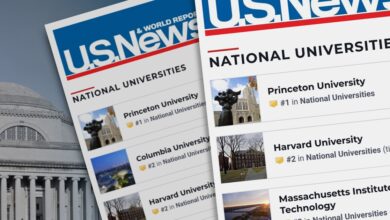Colleges Send Mistaken Acceptances Every Year. Why Does This Keep Happening?

[ad_1]
For many students, it all comes down to a simple email. Accepted or rejected. Scholarship or no scholarship.
But what happens when the email is wrong?
In just the last month, two Michigan colleges sent out mistaken offers. Due to “human error,” 5,500 already admitted students were told they had received $12,000-per-year, four-year scholarships at Oakland University. Central Michigan University told 58 students they were the recipients of an award that covers full tuition, room and board, and money toward books, plus $5,000 for studying abroad.
Mistaken acceptances or scholarship offers are nothing new. In 2009, 28,000 students received a mistaken email saying they had been accepted to the University of California at San Diego. In 2016, 130 hopeful Tulane University applicants were mistakenly welcomed as students and even given university email addresses.
Mistakes like those can leave plenty of hurt feelings in their wake. So why do they persist across the decades?
“There are a couple different areas that can go awry,” said Tiffany Blessing, an admissions counselor for IvyWise and a former assistant director of admissions at the Massachusetts Institute of Technology.
As institutions have turned to digital processing, it has created room for errors that are not as easily caught as they might be with analog systems. Colleges rely on companies to build databases for everything from marketing and communicating with potential students to handling their actual applications, Blessing said.
“When you are working with lots of names, and addresses, and communicating often to different sets of students with different academic or programmatic interests, there is the chance for error,” said Jay Blanton, a University of Kentucky spokesperson, in an email. “That’s why it is important to build in redundancy and different check points in the system so that there isn’t only one person checking the data or only one person making sure that names are being matched with the appropriate communication.”
In April, Kentucky accidentally sent out acceptance letters to 500,000 high-school seniors. The accident led university officials to quickly apologize and create a landing page for anyone with questions.
It also prompted administrators to re-examine the approval processes for how they send mass emails, to see if changes were needed. The university has since built in additional approval processes to ensure that multiple eyes are on each communication before it is sent, Blanton said.
“We want to believe that admissions and the process is incredibly personalized, and it should be,” Blessing said. “In some ways it is. Admissions officers, no matter the office, are making decisions about applicants. But in the same note they have to manage a huge database of information.”
Admissions officers are still human, and they make mistakes, no matter how badly they wish they didn’t.
It has been years since Marie Bigham, founder and executive director of the advocacy group Accept Inc., worked in admissions — back in the days when everything was on paper — but she can see the issues of an all-digital process.
“It could be a mail merge gone wrong, it could be a code for students with one decision versus another might have been inputted incorrectly into the communication order,” Bigham said. “I don’t think it’s anything malicious, I think that weirdly it’s less hands-on and tangible and so it might just be easier to have those errors.”
One of the Bigham’s favorite and least favorite memories from working in admissions was the period after all the final decisions had been made and it was time to verify everything. “We would have print-out lists in these giant mail buckets filled with files and we had to verify every single decision over and over and over again,” Bigham said.
Human error was present in the days of the mail buckets, just as it is now. How universities manage a mistake after it happens may be more important the preventing the occasional flub.
While the 58 students at Central Michigan were not actually recipients of the award they were told they would get, the institution said it would work to make good on its mistake by offering the students the equivalent of a full-tuition scholarship.
“At the end of the day we’re educators and I know that it is really important to really try to salvage the relationship with the students that were impacted,” Blessing said. “They’re teenagers. The emotions that go behind this — even if the decision was only rendered for a couple of minutes — it’s still an emotional rollercoaster.”
[ad_2]
Source link






